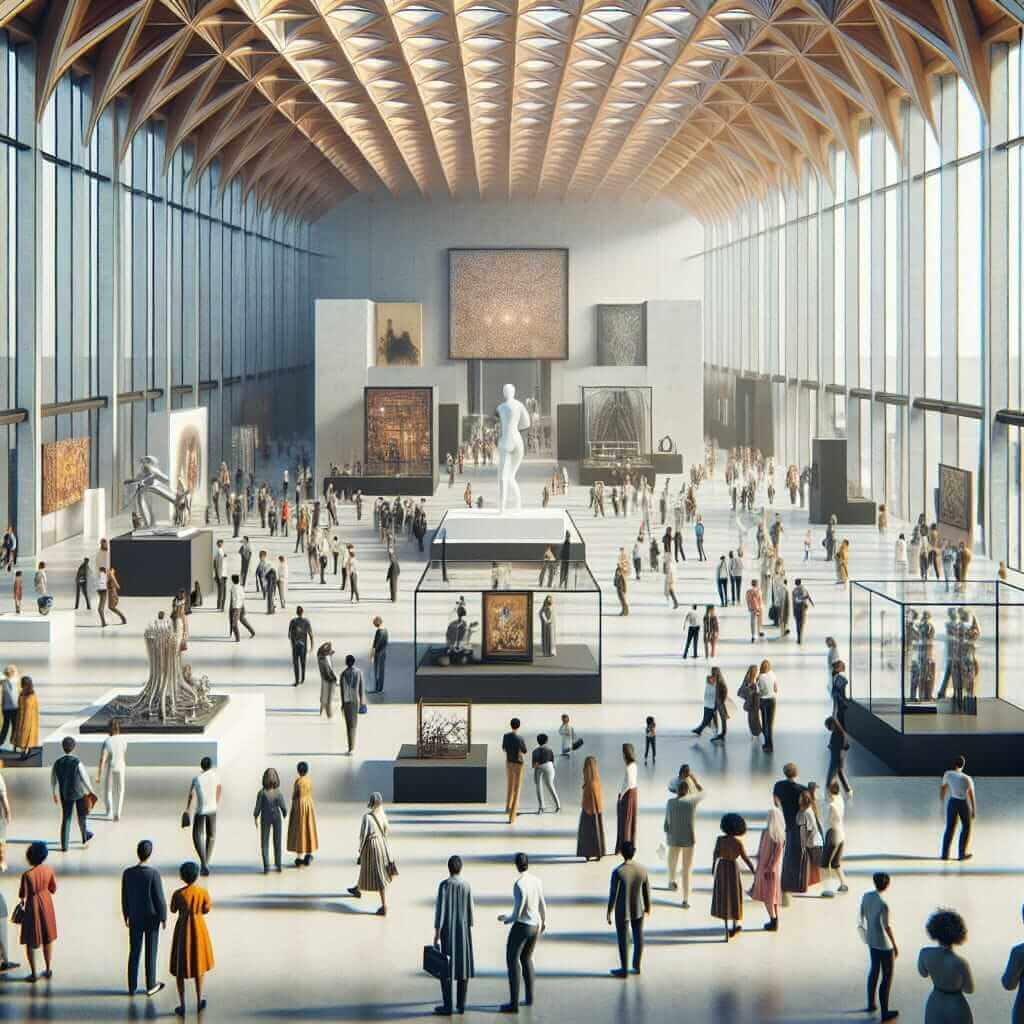As an IELTS instructor with over 20 years of experience, I often encounter students who feel anxious about the IELTS Speaking test. A common concern is the unpredictable nature of the cue cards. One such card that frequently arises is: “Where do they usually hold exhibitions in your country?”. This seemingly simple question can actually offer a wealth of opportunities to showcase your language skills. Let’s delve into how to effectively tackle this cue card and impress your examiner.
Understanding the Cue Card’s Objective
The examiner isn’t just looking for a list of exhibition centers. They are assessing your ability to:
- Describe places: Can you vividly describe the locations and their characteristics?
- Discuss events: Can you talk about the types of exhibitions held and their significance?
- Express opinions: What are your personal views on these events?
- Use a range of vocabulary and grammar: Can you demonstrate fluency and accuracy in your spoken English?
Crafting Your Response
1. Brainstorming Locations
Start by thinking about common venues for exhibitions in your country. These could include:
- Convention centers: These are purpose-built for large-scale events. (e.g., “The most popular choice would have to be the National Convention Center, mainly because it boasts such a massive space.”)
- Art galleries and museums: These often host exhibitions related to art, history, or culture. (e.g., “For a more artistic vibe, there’s the National Gallery, which is renowned for showcasing both classical and contemporary works.”)
- Universities: Many universities have exhibition spaces used for academic or public events. (e.g., “Our universities, particularly the more established ones, have dedicated galleries that frequently host exhibitions on a variety of themes, from science and technology to cultural displays.”)
- Public parks and squares: Outdoor spaces are sometimes used for exhibitions, especially during festivals or special occasions. (e.g., “During the summer months, we often see open-air exhibitions popping up in city parks, showcasing local artists or celebrating cultural events.”)

2. Describing the Locations
When describing these places, focus on:
- Size and capacity: How large are these venues? (“It’s an expansive space, capable of accommodating thousands of visitors.”)
- Facilities: What amenities do they offer (e.g., conference rooms, cafes)? (“It’s well-equipped with state-of-the-art audio-visual systems and spacious conference halls.”)
- Location and accessibility: Where are they located, and how easy are they to reach? (“Situated right in the heart of the city, it’s easily accessible by public transportation.”)
- Atmosphere: What is the overall ambiance of the place? (“The gallery has a very serene and contemplative atmosphere, perfect for appreciating art.”)
3. Discussing Types of Exhibitions
To broaden your response, talk about the types of exhibitions held:
- Art exhibitions: (“We have a thriving arts scene, so exhibitions featuring paintings, sculptures, and photography are quite common.”)
- Trade shows: (“Annually, there’s a huge influx of international visitors, particularly for our renowned trade fairs focusing on technology and innovation.”)
- Cultural exhibitions: (“These offer fascinating glimpses into different cultures, featuring traditional crafts, attire, and even culinary delights.”)
4. Expressing Your Opinions
Share your personal views on exhibitions:
- Frequency of attendance: (“I try to attend at least a couple of exhibitions each year, especially those that align with my interests.”)
- Benefits of attending: (“I find them incredibly enriching, offering opportunities to learn new things and broaden my perspectives.”)
- Preferences: (“Personally, I’m drawn to interactive exhibitions or those that incorporate technology in engaging ways.”)
Example Response
“In my country, exhibitions are usually held in a variety of places. Large-scale events, like international trade shows, often take place at our National Convention Center, which is a massive complex specifically designed for such gatherings. On the other hand, art exhibitions are more commonly found in galleries and museums, like the National Gallery, known for its impressive collection of contemporary art. Universities also contribute to the exhibition scene, frequently hosting events that are open to the public. And during the summer months, it’s not unusual to find open-air exhibitions in public parks, showcasing local talent or celebrating cultural festivals. Personally, I find these events incredibly stimulating and try to attend whenever I can. I particularly enjoy exhibitions that offer interactive experiences or utilize technology in innovative ways, as they make the learning process so much more engaging.”
Tips for Success
- Use a variety of vocabulary: Instead of repeating “exhibition,” use synonyms like “trade fair,” “exposition,” or “showcase.”
- Employ complex grammar: Demonstrate your command of grammar by using a range of structures, such as relative clauses and conditionals.
- Maintain fluency: Speak at a natural pace, and don’t be afraid to pause briefly to gather your thoughts.
- Practice, practice, practice: The more you practice, the more confident and fluent you will become.
By following these tips, you can turn a seemingly simple cue card into an opportunity to showcase your English proficiency and ace your IELTS Speaking test. Good luck!